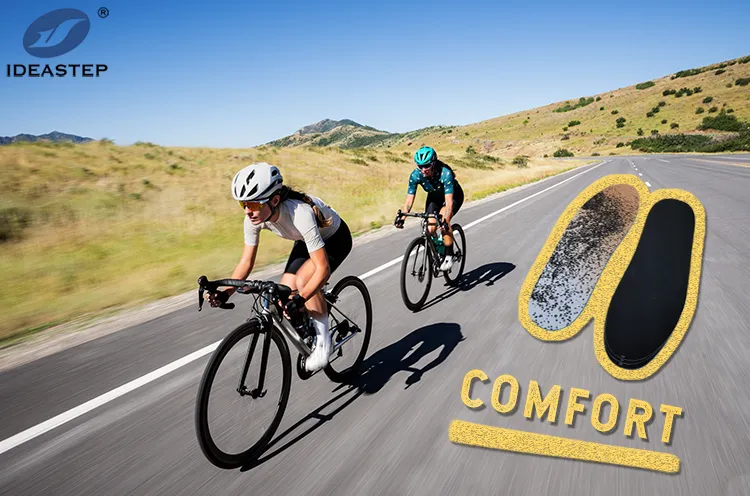The right choice of insoles can thereby contribute much to an athlete’s improved performance and injury prevention. This article will consider the various sports that may require special soles, describe who should wear them, and show how to properly choose the most suitable insoles to achieve comfort and performance. All of these elements may significantly affect the general performance and well-being of an athlete.
What Sports Can Be Improved with Sports Insoles?
Performance enhancement with sports insoles can really be applied to a wide array of athletic activities. Some major sports that benefit most from special insoles include the following:
- Running: Running insoles are designed to provide cushion and arch support, reducing impact on joints and lowering the incidences of specific injuries, such as shin splints. Insoles for sport can absorb the shock and enhance stability with the additional heel cushioning, and hence, agility will increase with every jump and quick movement with reduced possibilities of ankle injury.
- Soccer: Insoles specialized for soccer help players in supporting their foot alignment and boost traction for agile changes in direction.
- Tennis: These insoles give support to lateral movements with shock absorption required for players who do a lot of sprinting and pivoting.
- Cycling: These insoles are designed for pedal efficiency and comfort by enabling effective energy transfer from the foot to the bike.
Appropriate sports insoles can provide better performance, comfort, and injury protection for numerous athletes in most sports.
Who Needs Sports Insoles?
Knowing who sports insoles are good for, such assistance will help different kinds of individuals in enhancing their athletic experiences. Many groups have certain special needs which are most benefited by the use of specific insoles. These include:
- Professional Athletes: Those involved in high-impact sports or exercises require additional support and cushioning to excel in their respective disciplines and avoid injury in the process.
- Recreational Sports Person: Even casual athletes can benefit from better comfort and support so that they do not experience any kind of discomfort during physical activities.
- Individuals with Foot Conditions: People suffering from specific conditions like plantar fasciitis, flat feet, and high arches require special insoles that target areas of support and alignment. Older adults may experience changes in the structure of the feet; hence, discomfort may arise during physical activities. Custom insoles can relieve this discomfort.
- Individuals Recuperating After Injuries: Patients recuperating from injuries affecting their feet and ankles may need insoles that provide enough support and cushioning to aid in the recovery process.
By identifying such people’s needs, businesses can advertise the advantages of insoles during sports to attract larger markets.
How to Choose Sports Insoles
To choose appropriate sports insoles, a number of factors have to be addressed to guarantee comfort and performance. Some of the key factors to consider when making your choice include:
- Arch Support: Consider the arch type—flat, neutral, or high. The design of insoles should be tailored to the specific arch shape for better support and alignment.
- Cushioning: The level of cushioning will vary depending on the sport. Many high-impact sports may require a higher level of cushioning to absorb shock.
- Material: Strong and breathable materials are important. Popular options include foam, gel, and carbon fiber for varying levels of support and comfort.
- Fit and Size: Insoles should not cause overcrowding but rather fit comfortably inside the shoe. They should correspond to the shoe size for optimal comfort.
Some insoles have additional features that provide extra comfort, such as moisture-wicking properties, anti-microbial treatments, or additional heel support.
Key Takeaway Points
In conclusion, choosing the right sports insoles is essential for improving athletic performance across various sports. From comfort enhancement to injury prevention, understanding who requires insoles and how to select appropriate ones is the key to maximizing their benefits. Key considerations include arch support, cushioning, material, fit, and additional features. High-quality insoles can significantly impact athletic performance by optimizing comfort and minimizing the risk of injury.
Businesses like Ideastep can simplify the process by providing high-quality sports insoles tailored to the needs of athletes and active individuals. By sharing this knowledge, you empower potential customers to make informed choices that enhance their sports performance and overall foot health.


